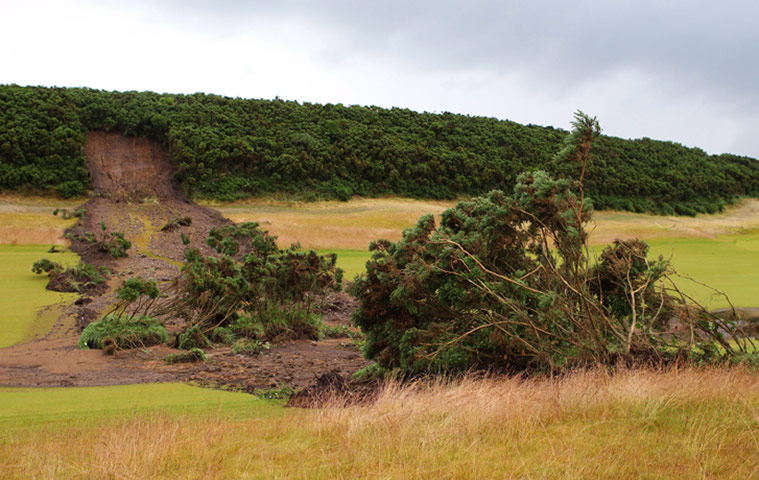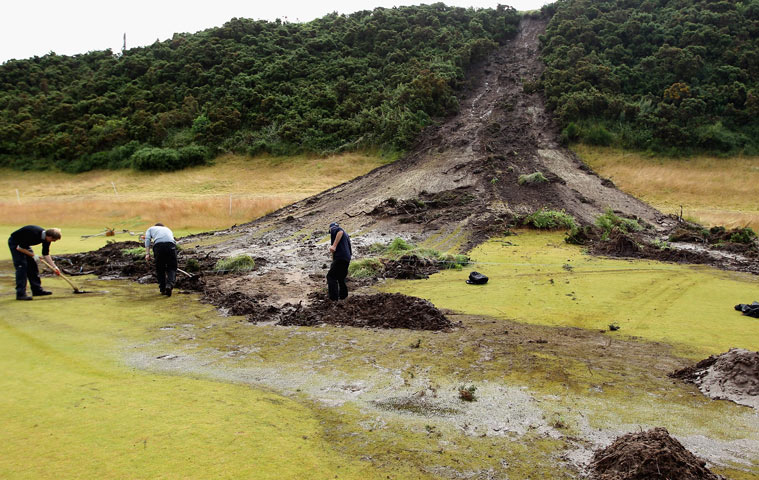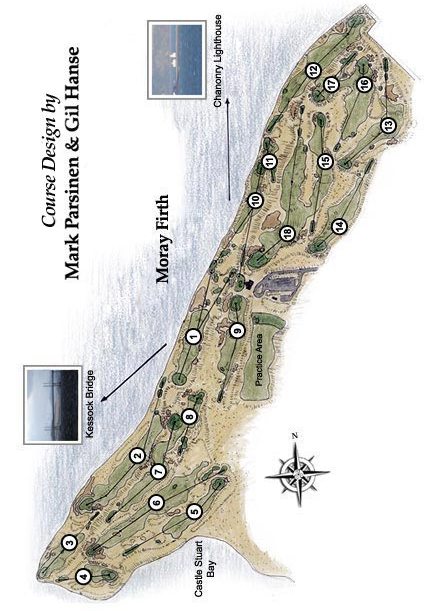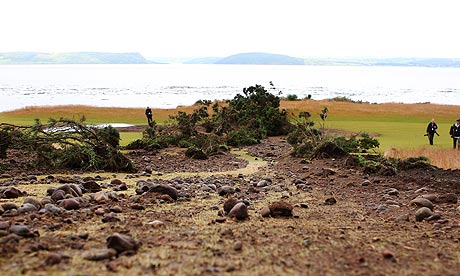11 July 2011
Landslides and golf
Posted by Dave Petley
Perhaps the strangest landslide story of the month emerged from the Scottish Open Golf tournament over the weekend. The tournament, which was held at the Castle Stuart course near to Inverness over the weekend, had to be shortened from 72 to 54 holes after torrential rain on Friday and Saturday left the course unplayable. The key event occurred on Friday night, when at least two landslides were triggered on the edge of the margins of the course. The Guardian has the best images of the landslides – this is the one that attracted the most attention:-

http://www.guardian.co.uk/sport/gallery/2011/jul/09/scottish-open-weather-havoc-gallery#/?picture=376687545&index=0
Whilst this is the other:

http://www.guardian.co.uk/sport/gallery/2011/jul/09/scottish-open-weather-havoc-gallery#/?picture=376688125&index=6
There is a couple of things of interest to note here. First, although it does not appear to be the case, the course is brand new, having only opened initially in the summer of 2009, and fully in 2010. It is unclear how much earthworks were required to construct the topography, but the 2006 Google Earth image of the site, before the construction of the course started, seems to show pretty flat farmland:

For comparison, this is the course map as per the official website, rotated into the same orientation as above:
The second is the mobility of the first landslide, which has travelled a substantial distance. Note that the terrain is clearly not flat, even on the lower slopes, but the slide does suggest that the material was in a quite liquid state (whilst still able to transport substantial gorse bushes). This Guardian image, taken from the top of the slope, is quite instructive:
Note the way that the landslide has left coarser material behind on the slope and has built a levee on each side. Finally, it appears that the flowing water after the slide has removed debris to form a channel down the centre of the slide, which reveals that the grass underneath is essentially undamaged. All of this points to a shallow flow type event.
Unfortunately, I have not been able to track down an hourly rainfall record for the triggering event – anyone?
Incidentally, if you are interested the tournament was won by the British golfer and current world number one, Luke Donald.




 Dave Petley is the Vice-Chancellor of the University of Hull in the United Kingdom. His blog provides commentary and analysis of landslide events occurring worldwide, including the landslides themselves, latest research, and conferences and meetings.
Dave Petley is the Vice-Chancellor of the University of Hull in the United Kingdom. His blog provides commentary and analysis of landslide events occurring worldwide, including the landslides themselves, latest research, and conferences and meetings.
3 inches of overnight rain according to the press.
The most “seaward” holes are built at current sea level, with the rest on what I assume is a raised beach (the flat farmland).
I’m not familiar with Gorse, how long would the foliage on the bluffs take to grow? Judging from my local condition (no guarantee, just a comparison), I would expect the Gorse would be more than a couple of years old, suggesting the bluffs might predate the given times.
Info from radio interview – The course owner stated that the old sea cliff was known to have failed 40 years ago, and that a possibl repeat was knownwhen the course was built. Overnight rainfall of 3.25 inches in 3 hrs caused failures, but very heavy rain prior to that had alreeady caused flooding of course in places.
[…] Mother Nature says, “fixed!” […]
The final photo shows rounded cobbles in the runout zone, suggesting failure of old marine terrace deposits. Ground water may have accumulated at the bedrock contact, facilitating movement.
Glorious place for golf, though!